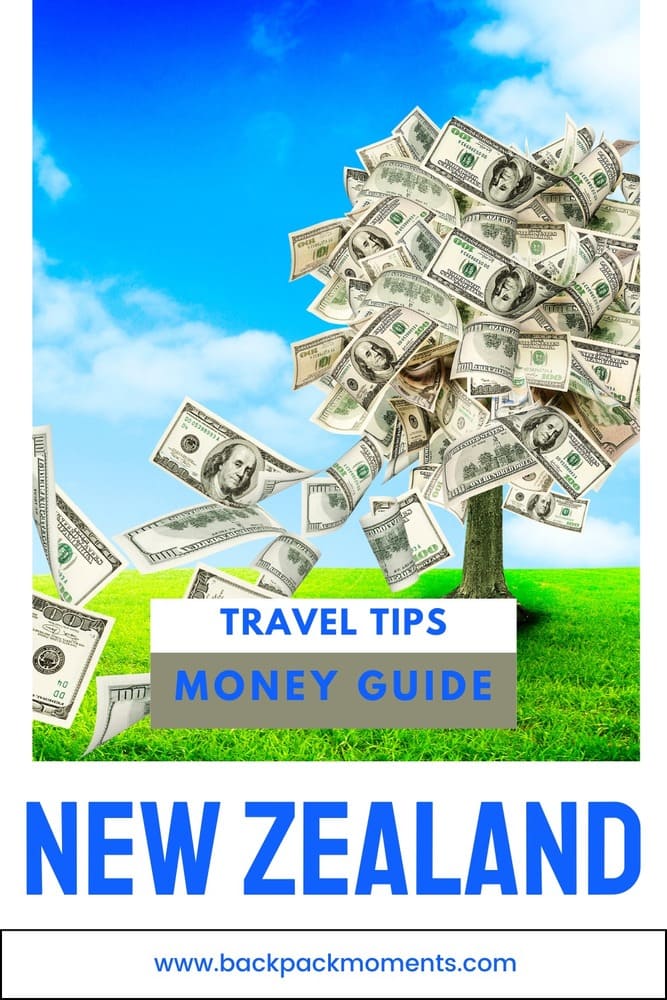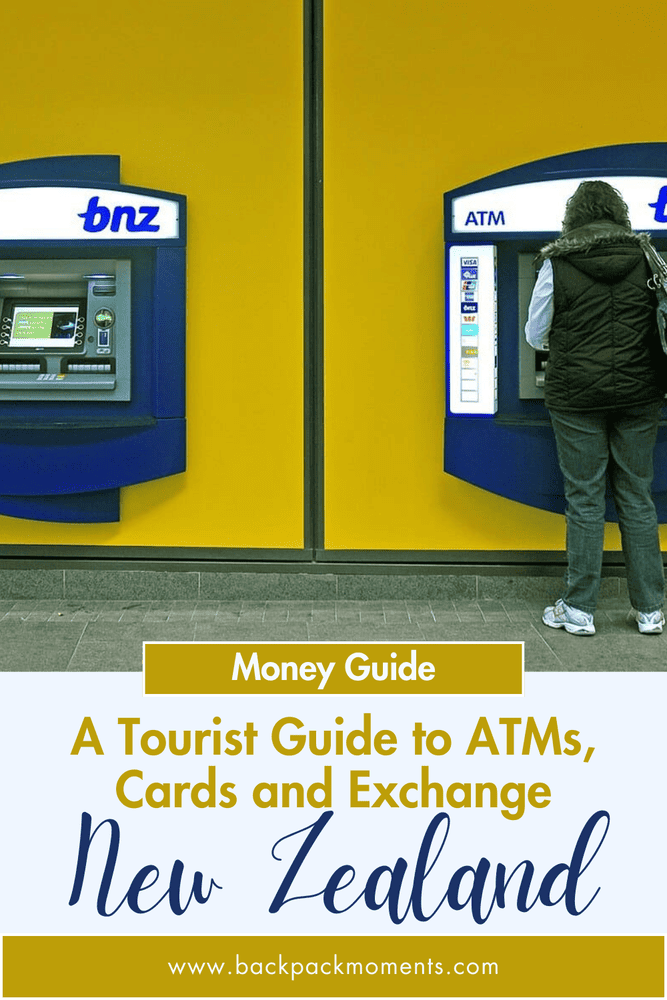Money in New Zealand: A Tourist Guide to ATMs, Cards and Exchange
This post may contain affiliate links. If you make a purchase using one of these links, I may receive a small reward at no extra cost to you. See my Disclosure Policy for more information.
New Zealand may be at the end of the world (or not even on the map sometimes) but even there you will need money.
Well, not really. Not in the traditional sense. New Zealand is almost cashless today and it is possible to have a trip there without ever touching a physical banknote.
There are a few caveats to that you’ll learn about. Also, you may still want the pretty New Zealand Dollars in your wallet.
| Best foreign currency to bring | AUD, USD, Euro |
| Where to exchange? | Banks, exchange bureaus |
| ATMs without a fee | BNZ |
| Can you withdraw USD directly? | No |
| Can you use Revolut, Wise, Monese, etc? | Yes! |
| Cash or card? | Card |
Currency in New Zealand
The currency in New Zealand is the New Zealand Dollar with code NZD, often distinguished by NZ$
New Zealand’s currency has been decimal since 1967, meaning today one dollar is subdivided into 100 cents.
It is a stable currency, well-traded, and easily exchangeable. It’s in the top 15 most traded currencies in the world.
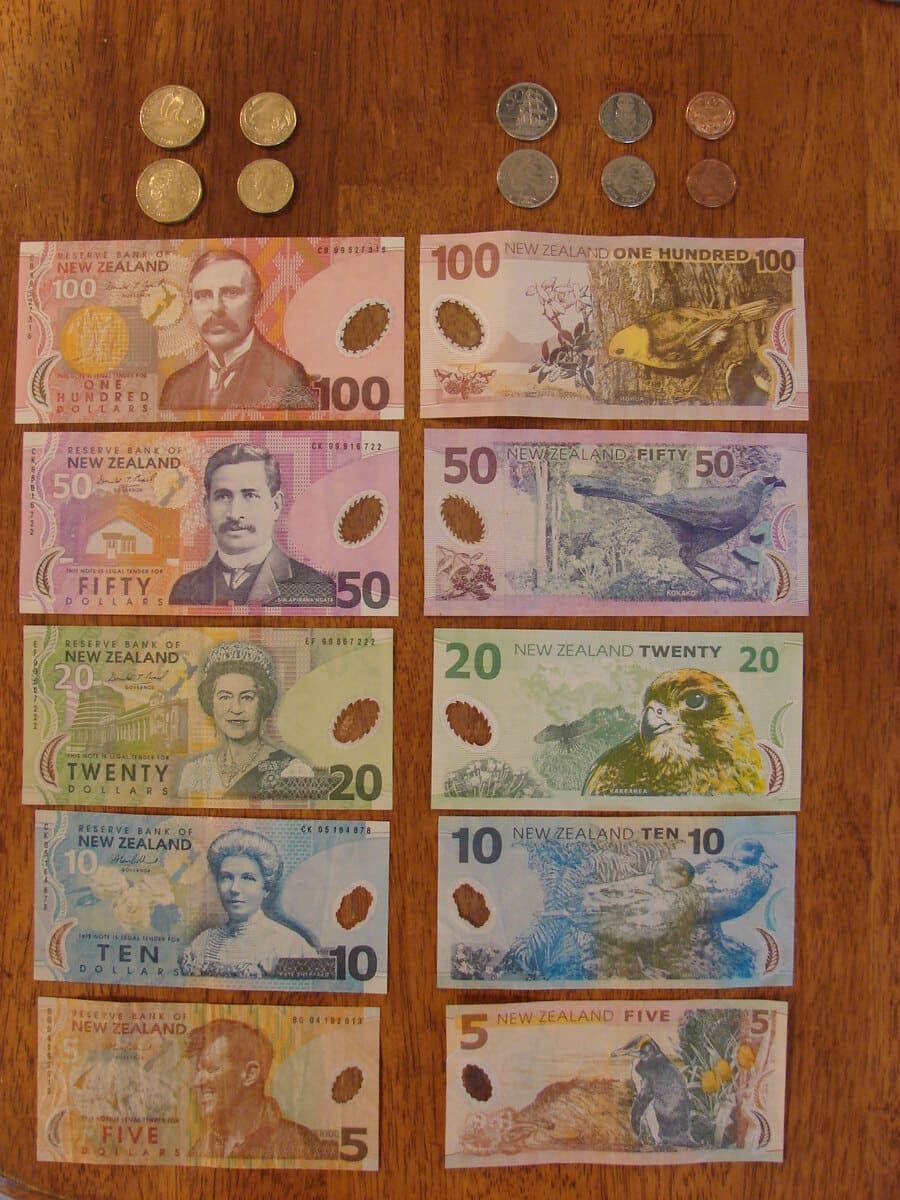
There are coins for 0.1, 0.2, 0.5, 1 NZ$, and 2 NZ$. The smaller 1 cent, 2 cent, and 5 cent are not minted anymore because it costs more to make them than what they are worth.
The banknote denominations are 5, 10, 20, 50, and 100 NZD.
All banknotes of the New Zealand Dollar are made of polymer just like the money in Australia and the money in Vietnam making them very durable.
Card or Cash in New Zealand?
New Zealand is almost entirely a cashless society.
There has been some social pushback to that (not only in NZ but also in Australia and the UK) but the convenience of using your card for everything and not having to carry any notes is too big of an incentive for most people to pass on.
What this means for the average traveler, is that if you don’t want to get cash, you can get by in New Zealand without any.
Card payments are everywhere – from supermarkets and hotels to convenience stores and transportation. Even smaller food carts have a POS terminal nowadays!
Unfortunately, in most places, you will be charged an additional 1.5% to 3% commission to pay by card. There must be a prominently displayed sign showing the extra charge. It is to cover bank fees.
If anything, in New Zealand it’s more likely that a place doesn’t accept cash than that it doesn’t accept cards!
For example, the hostel I stayed at in Lake Tekapo wouldn’t accept cash but also charged 2% for card payments. Not fair. At least stargazing in Lake Tekapo was worth it!
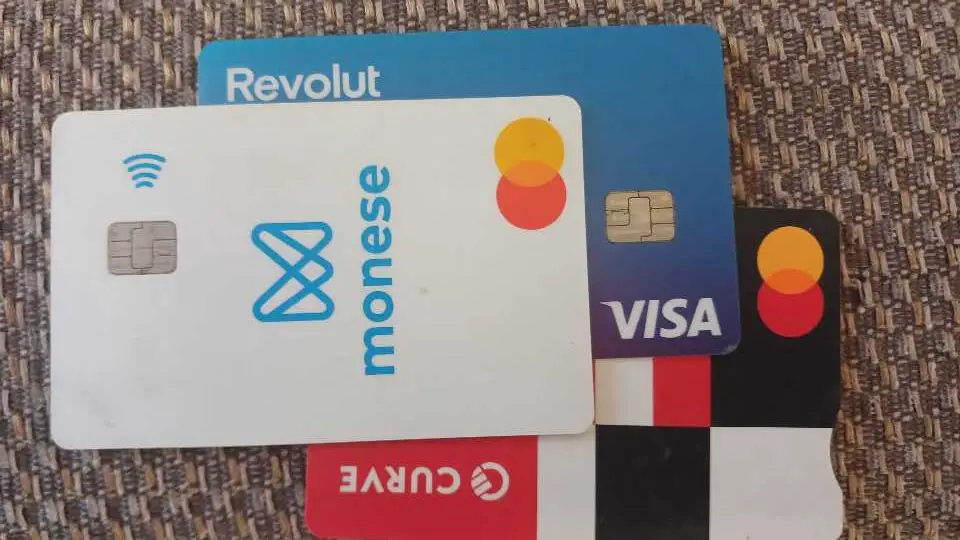
When it comes to the kinds of cards accepted, all issuers go – Visa, Mastercard, Maestro, American Express, UnionPay, etc.
ATMs in New Zealand
There are plenty of ATMs in New Zealand. An abundance in the cities and just enough in the countryside and smaller towns.
Even in very small towns in the South Island, you will find at least 1 ATM. And remember that you can pay by card almost everywhere.
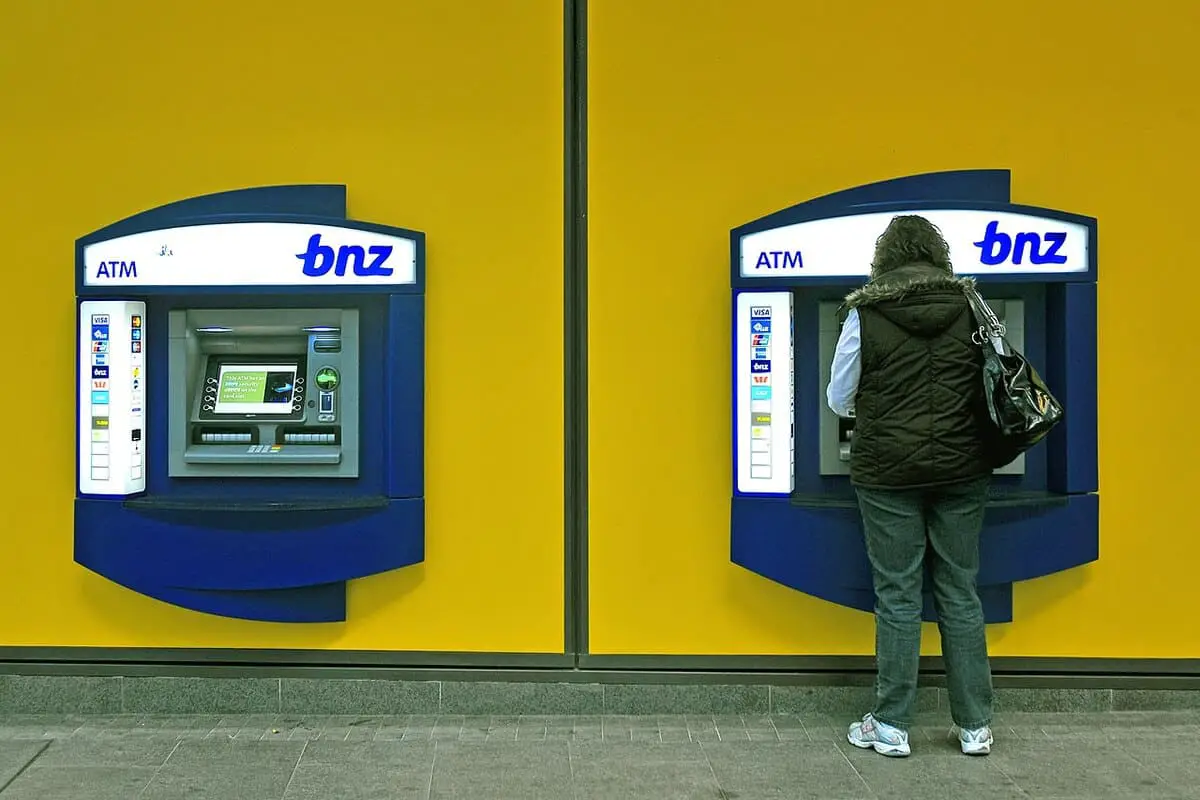
The maximum withdrawal amount on ATMs is between 400 and 650 NZD. The maximum daily limit for foreign cards is 2000 NZD (~1200 USD).
It’s become the most common advice about ATMs on the internet but I will include it regardless: Never accept Dynamic Currency Conversion (DCC) if offered on screen.
Withdrawal Fees
Here comes the tricky part – avoiding those pesky ATM withdrawal fees. I’m not talking about the fees you get charged by your bank – those you can avoid by using a FinTech solution like Revolut, Curve, or Monese.
Some ATMs in New Zealand charge a withdrawal fee of either 3 NZ$ or 5NZ$. But there exist ATMs that don’t charge a fee.
ATMs without withdrawal fees
ATMs of BNZ bank do not charge foreign cards for cash withdrawals. It’s the best ATM for foreigners as their ATM network covers the entire country.
Westpac Bank also doesn’t charge for using their ATMs with a foreign card but they have fewer ATMs.
Avoid ANZ – it’s easily the most widespread ATM in New Zealand but it charges 5 NZ$ for withdrawals.
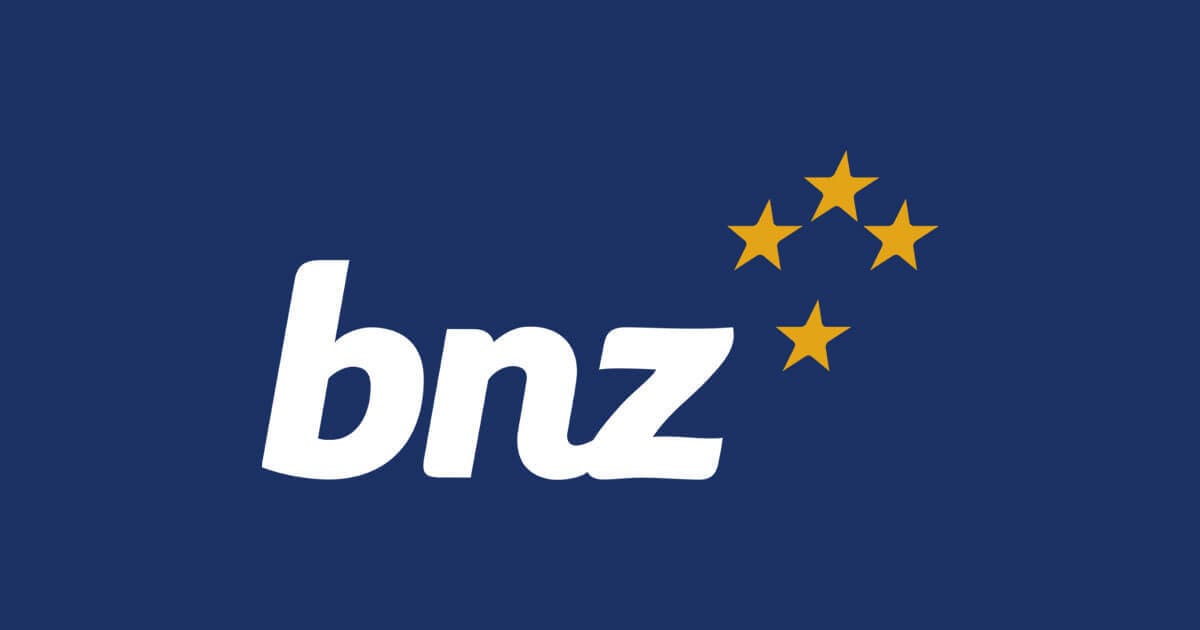
Use this BNZ ATM Locator to find the closest to you. You will recognize their ATMs by the deep blue color and the Northern Cross (the 4 stars).
Exchanging Money in New Zealand
You can exchange foreign currency at banks, hotels, and exchange bureaus.
The exchange margins are low for most of the world’s currencies but even then, you may pay less if you just use your card instead of bringing and exchanging hard cash.
What currency to bring
It really doesn’t matter which of the world’s biggest currencies you bring with you. The easiest currencies to exchange in New Zealand are the Australian Dollar, the US dollar, the Euro, and the British Pound.
You will have no issues exchanging these currencies too:
- Chinese Yuan;
- Japanese Yen;
- Singaporean Dollar
- Swiss Franc;
- Canadian Dollar;
If you come from a country with an obscure currency, it’s best to change to USD before you come to New Zealand. But then again, it will be cheaper to pay by card directly.
I never exchanged any money in New Zealand – the country is almost cashless, so I didn’t need to.
How much cash to bring to New Zealand?
Don’t bring any cash. Using your card will almost certainly save you money in exchange margins and time in finding an exchange bureau with good rates.
However, I advise everybody to always carry some cash in USD when traveling in case of any unforeseen circumstances like losing your card or your bank locking it and you not being able to contact them.
Carry 500 USD on you just in case. In New Zealand, the Australian Dollar has the same power as the US dollar, so you can have a small cash reserve in AUD instead.
Prices in New Zealand
These are actual price ranges from 2024. Inflation is around 5%. All prices are in NZD; 1 NZD = 0.6 USD.
- Latte: 4-6 NZD
- Burger: 12-20 NZD
- Fish and Chips: 10-15 NZD
- Meat pie: 4-9 NZD
- A can of beer from the supermarket: 3-4 NZD
- A pint of beer in the pub: 8-15 NZD
- Stargazing at Lake Tekapo: You can do it for free (click for my guide) or a tour for ~100 NZD.
- Museums: some free, some up to 35 NZD
- Walking tour of Hobbiton: 120 NZD (73 USD)
- Milford Sound full-day trip: 236 NZD (142 USD)
- Budget hostel: 40-70 NZD (24-42 USD), holy mangoes, hostels in New Zealand are expensive!
- Mid-range hotels – 90-200 NZD (50-120 USD)
- Overland bus travel – ~0.6 NZD per kilometer of travel
- Travel Insurance from SafetyWing (covers you in New Zealand): ~45 USD for a 20-day trip.
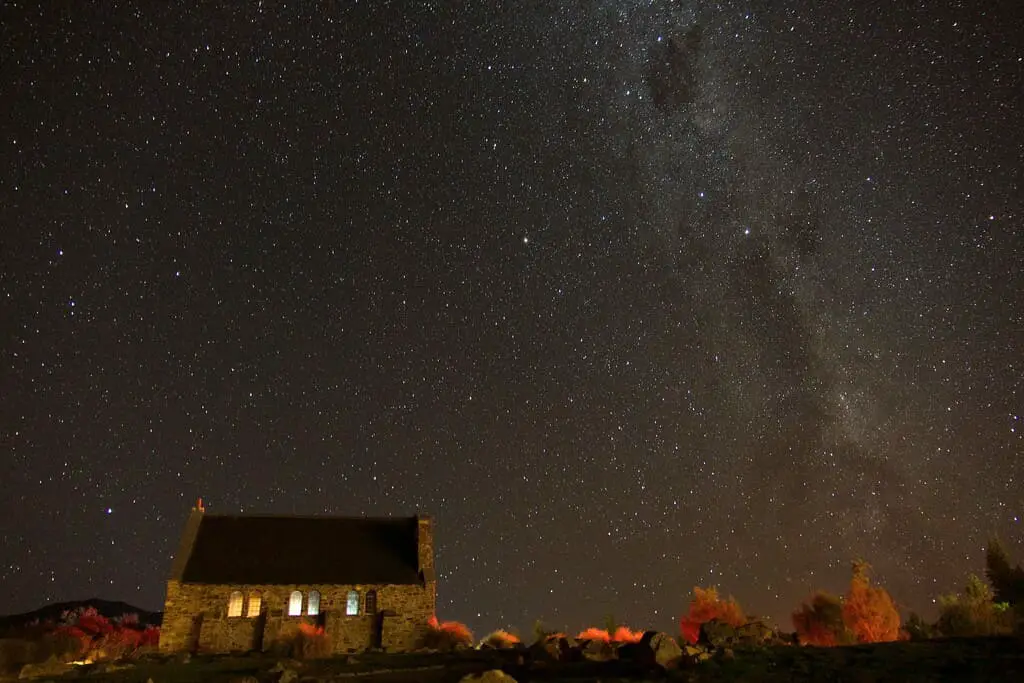
Tipping
Tipping is not part of the culture in New Zealand. Tipping is not expected in most situations.
In upscale establishments, there will already be a 10% service charge.
Also, note that service employees are paid at least the minimum wage which is 23.15 NZD per hour (14 USD). New Zealand is not like the US where tips make up the majority of an employee’s salary. In New Zealand, they don’t rely on tips and will not be upset if they don’t receive one.
That being said, if you want to tip nothing is stopping you.
In some coffee shops, small bakeries, and roadside shops, there will probably be a Tipping Jar. You can drop your change in, a dollar or two even. No need to calculate percentages.
And if you’ve received exceptional service – you may tip to show appreciation.
This guide to tipping in New Zealand has a more detailed view.
Frequently Asked Questions
Let’s answer some of your most burning questions about money in New Zealand.
What is the ATM withdrawal limit in New Zealand?
ATMs commonly have a withdrawal limit of 400 or 650 NZD per single transaction and a daily limit of 2.000 NZD for foreign cards.
Can you use US dollars in New Zealand?
No. You must use the New Zealand Dollar. However, you can pay for almost everything by card and let your bank do the exchange behind the scenes.
Which banks do not charge withdrawal fees at an ATM?
Use BNZ or Westpac to avoid paying ATM access fees.
Can you use Revolut in New Zealand?
Yes, Revolut cards work in New Zealand. Both VISA and Mastercard work. You can withdraw from ATMs and pay on POS terminals with your Revolut card.
The New Zealand Dollar is supported by Revolut, so you can exchange money inside the app beforehand. Revolut recently entered the Kiwi market and locals can make accounts, so many will probably be familiar with what it is.
Similar fintech apps like Wise, Monese, Curve, N26, and Starling also work there.
Traveling to Fiji too? Check out this guide to money in Fiji!
